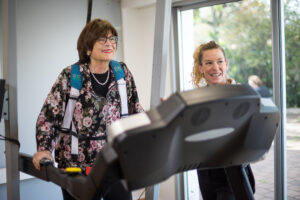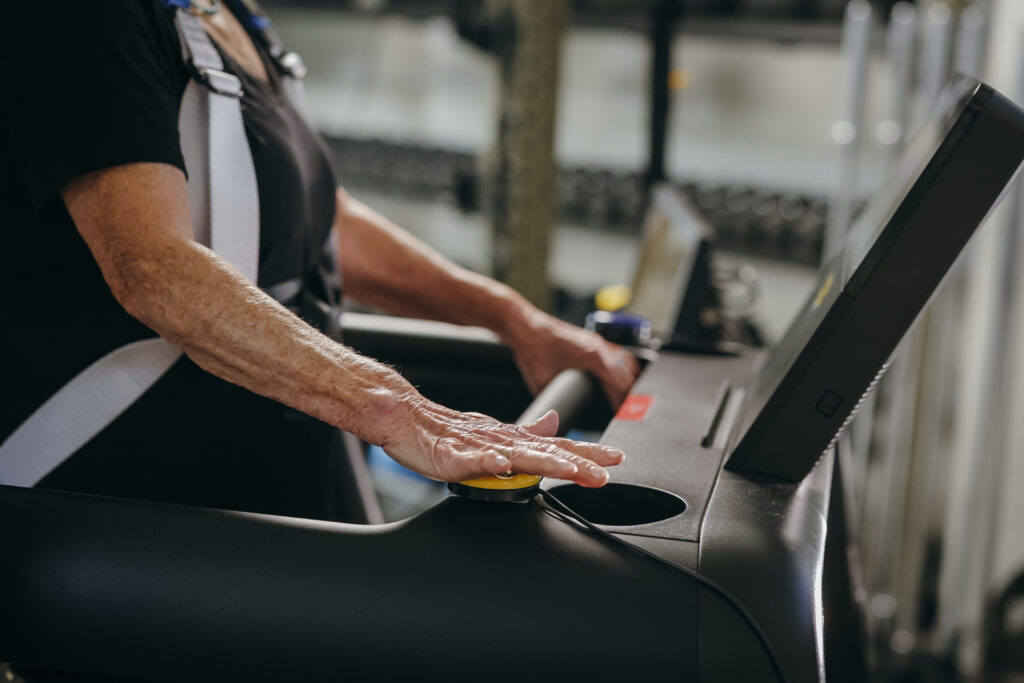Written by
Sagi Giterman,
Director of Product and Customer Success
GaitBetter

Enhancing Gait Rehabilitation with Dual-Tasking Gamification
Walking may seem like a simple task, but in reality, it requires complex coordination between the brain and body. For individuals with gait impairments—whether due to aging, neurological disorders, or injuries—walking can become a challenge. Traditional rehabilitation methods focus on restoring physical function, but emerging research shows that integrating cognitive engagement through dual-tasking gamification can significantly enhance gait recovery.
What is Dual-Tasking Gamification?
Dual-tasking refers to performing two tasks simultaneously, such as walking while solving a cognitive challenge. Gamification enhances this approach by incorporating game-like elements—such as scores, challenges, and interactive feedback—to motivate patients and improve engagement during therapy.
Key Benefits of Dual-Tasking Gamification for Gait Rehabilitation
1. Improved Cognitive-Motor Integration
Many gait impairments are linked to deficits in cognitive function, particularly in attention and executive processing. By combining physical movement with cognitive challenges, dual-tasking gamification trains the brain and body to work together, leading to improved motor control and walking stability.
2. Enhanced Motivation and Adherence
Traditional rehabilitation exercises can feel repetitive and tedious, leading to poor adherence. Gamification introduces an element of fun and challenge, making therapy sessions more engaging. Patients are more likely to stay committed to their rehabilitation when they see progress and receive positive reinforcement through game mechanics.

3. Reduction in Fall Risk
One of the biggest concerns for individuals with gait impairments is the risk of falling. Dual-task training improves balance and coordination by teaching the brain to manage multiple stimuli simultaneously, enhancing reaction times and overall stability.
4. Personalization and Real-Time Feedback
Gamified rehabilitation platforms often use data tracking and AI-driven analytics to tailor exercises to each patient’s specific needs. This personalized approach ensures that therapy remains challenging yet achievable, optimizing recovery outcomes.
5. Greater Transfer to Real-World Scenarios
Walking in daily life is rarely a single-task activity; individuals often navigate environments while talking, carrying items, or making decisions. Dual-tasking gamification prepares patients for these real-world challenges, making rehabilitation more functional and applicable to daily life.

The Future of Gait Rehabilitation
With advancements in technology, dual-tasking gamification is becoming more accessible through virtual reality (VR), motion-sensing treadmills, and AI-powered rehabilitation platforms. As research continues to validate its effectiveness, this innovative approach is likely to become a cornerstone of gait therapy.
By combining cognitive engagement with physical rehabilitation, dual-tasking gamification not only enhances recovery but also empowers individuals to regain confidence and mobility in their daily lives. As the field evolves, embracing this interactive and engaging method could redefine how we approach gait impairments and rehabilitation strategies.

Final Thoughts
The integration of dual-tasking and gamification in gait rehabilitation offers an exciting opportunity to improve outcomes, increase patient engagement, and reduce fall risks. Whether through VR-based platforms or interactive treadmill programs, this approach is paving the way for a more effective and enjoyable rehabilitation experience.
If you’re involved in gait therapy or rehabilitation, consider how gamified dual-tasking methods could enhance your approach and improve patient outcomes. The future of rehabilitation is interactive, engaging, and more effective than ever.
